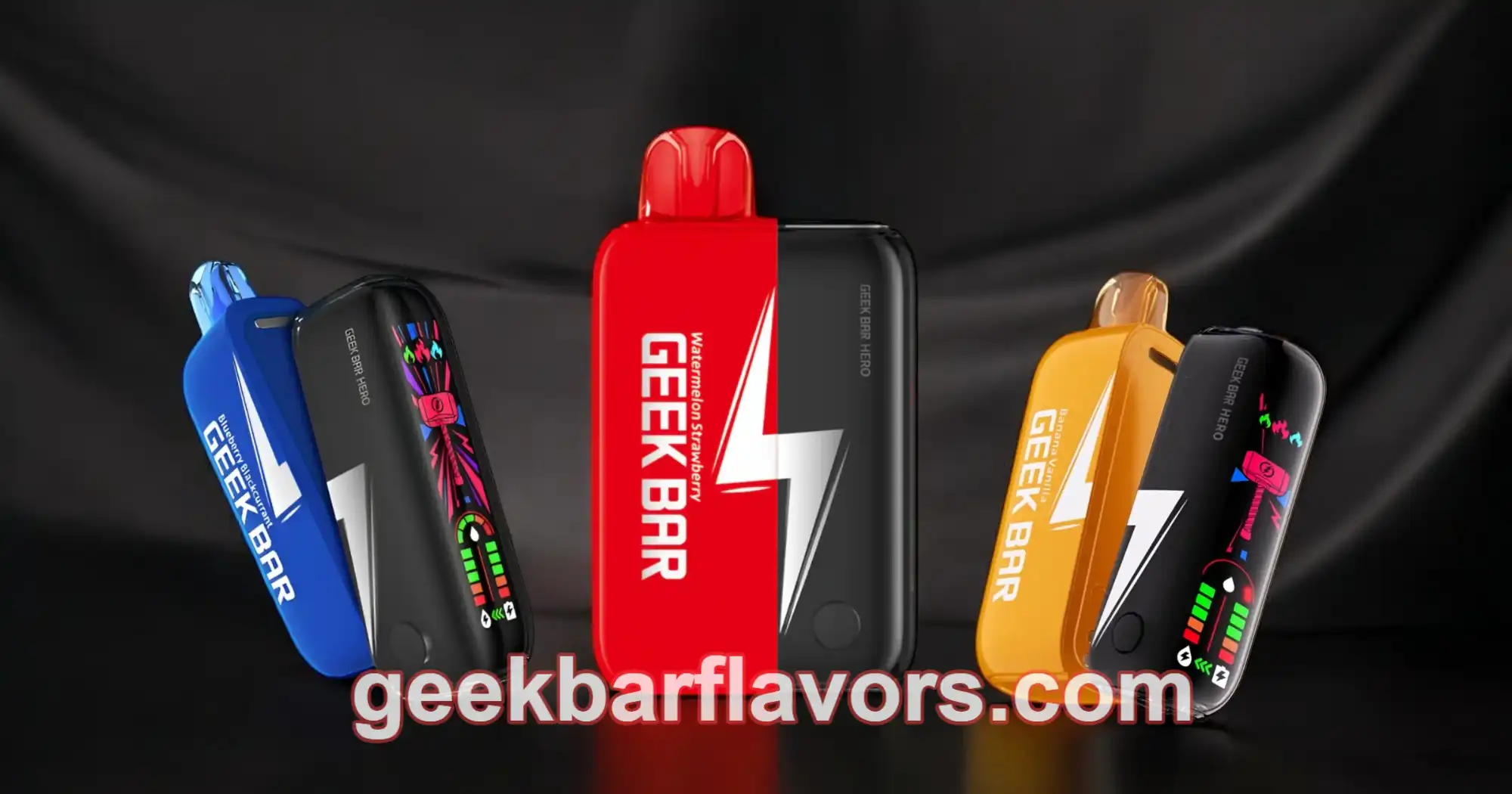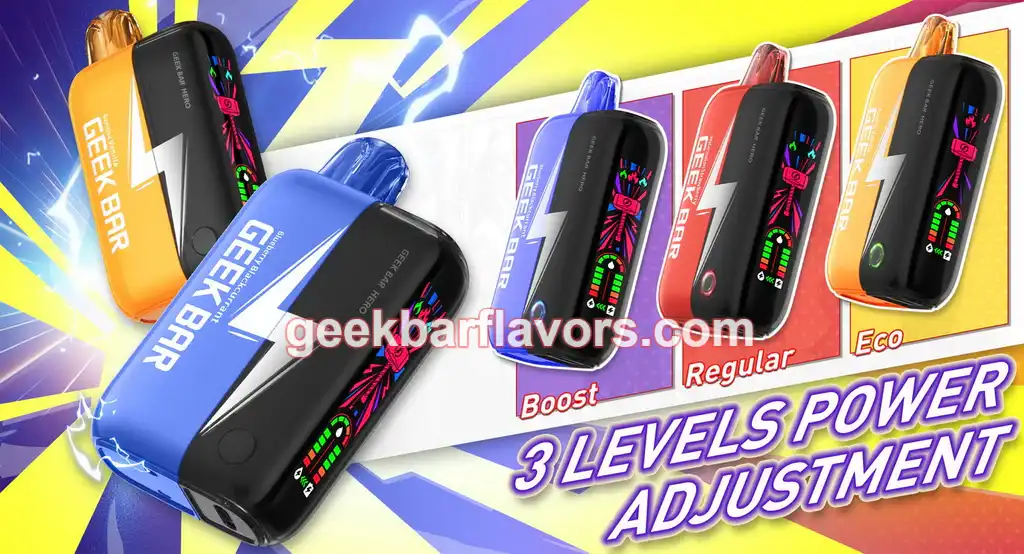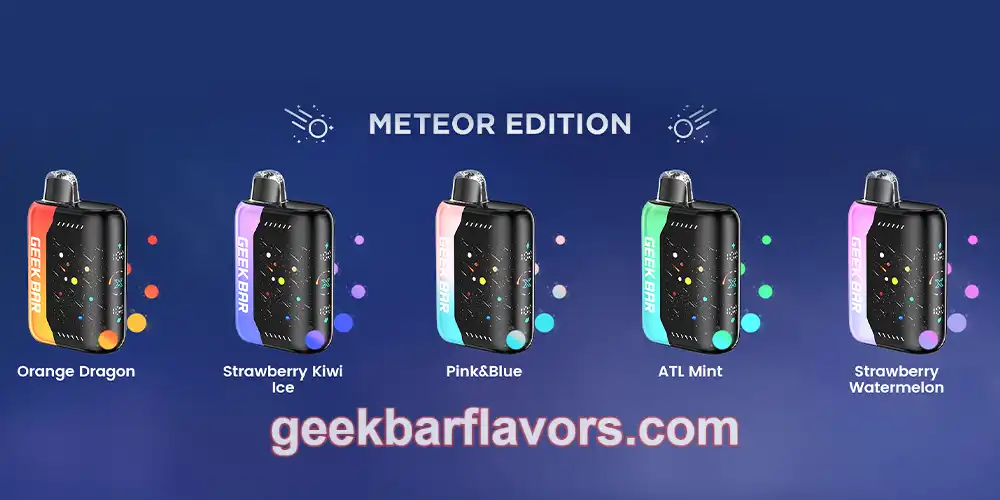The Rise of Disposable Vapes Among Gen Z: What Brands Like Geek Bar Can Learn
Vaping is no longer a niche habit. Over the past few years, it’s exploded into the mainstream, especially among Gen Z—America's tech-savvy, trend-driven, and socially-conscious youth. A recent survey sheds light on the evolving preferences and motivations of this demographic when it comes to vaping, revealing key insights into how brands like Geek Bar, known for their popular Geek Bar Hero 20000 and Geek Bar Pulse X Meteor Edition, can more effectively engage with this crowd.
The New Generation of Vape Users
In the U.S., e-cigarette (or vape) use is relatively low compared to traditional cigarettes, with only 16% of the population vaping. While that might seem like a small number, it actually underscores the fact that vaping is more of a new-age trend rather than a step toward quitting smoking. For Gen Z, vaping isn’t about kicking the nicotine habit—it’s about convenience, flavor, and, for many, stress relief. According to the survey, the primary reasons young people vape include:
- Stress Relief (40%)
- Appealing Flavors (30%)
- Nicotine Addiction (25%)
- Affordability (24%)
When it comes to the type of vape products they prefer, disposable vapes dominate the market, with 58% of respondents stating they prefer this option. Brands like Geek Bar have capitalized on this trend by offering sleek, user-friendly devices that cater to this preference for convenience.
Where and When Do Young People Vape?

The survey also revealed that the majority of vape users—especially Gen Z—aren’t just using their vapes at home. While 45% of respondents indicated they vape primarily at home, 34% admitted to using them in social settings like bars, clubs, and parties. This points to a larger cultural shift: vaping has become more of a social activity, often tied to shared moments with friends or during times of relaxation.
It's no surprise then that Gen Z has flocked to vapes like the Geek Bar Pulse X Meteor Edition, a limited-edition device designed for maximum convenience and flavor, perfect for a night out or hanging with friends. With disposable vapes that are sleek, portable, and easy to use, vaping fits seamlessly into young people's active social lives.
The Struggle to Quit
While vaping is undoubtedly a trend among Gen Z, many users are also aware of the risks and have attempted to quit. Nearly two-thirds of survey participants had tried to cut back or stop vaping altogether. However, half of them found the process incredibly challenging, citing nicotine addiction as a major barrier. This mirrors what we’re hearing in the field from mental health professionals: nicotine is highly addictive, and quitting can be a long, tough journey for many young people.
The difficulty in quitting highlights why vape brands need to be responsible and transparent in their marketing. Gen Z is curious about the long-term effects of vaping, and many want to hear real stories, not just scary ads or generic public health warnings. For instance, brands that educate users on how vaping impacts the body over time—or those that promote healthier alternatives—could position themselves as leaders in responsible vaping.
The End of Scare Tactics in Public Health Messaging
For years, anti-smoking ads have relied on shock value to scare people away from smoking and vaping. These ads often feature gruesome car accidents or graphic health consequences in an attempt to deter young people. But as Dee Madigan, an advertising expert, points out, such approaches are increasingly ineffective. Gen Z isn’t easily swayed by "scare tactics." They don’t feel threatened by the risks shown in these ads, mostly because they don't identify with the scenarios portrayed.
Instead, a more effective approach might be using humor or satire to target the behavior, poking fun at the "invincible" mindset many young people have when it comes to risky activities. This insight is crucial for brands and public health campaigns alike: understanding the mindset of the target audience is key to creating messages that resonate and ultimately drive behavior change.
Reaching Gen Z: The Digital Age of Advertising
Given that Gen Z is so digitally connected, one thing is clear: traditional methods of reaching this audience—like TV ads or radio campaigns—are no longer enough. Instead, brands need to go where Gen Z spends most of their time: social media. Platforms like TikTok, Instagram, and Snapchat are where this generation engages with brands, shares opinions, and finds out about new trends. If vape brands like Geek Bar want to make an impact, they need to invest in digital strategies that are not only targeted but also aligned with the interests and lifestyle of their audience.
A perfect example of this is Geek Bar Hero 20000, which was designed to be both functional and visually appealing. With a long-lasting battery life and a wide array of flavors, it has quickly gained traction on platforms like Instagram and TikTok. The product's vibrant colors and sleek design make it a perfect fit for influencer marketing—an area where Gen Z is especially engaged.
The survey also suggests that a multi-channel approach is crucial, with younger users frequently vaping throughout the day. Therefore, relying solely on "prime-time" TV spots is no longer the best way to reach this audience. Instead, an all-encompassing digital strategy that includes social media, podcasts, gaming, and even outdoor ads could be more effective in capturing the attention of young vapers.
What About the Long-Term Effects?
Interestingly, despite the booming popularity of vaping, many Gen Z vapers are still curious about the long-term effects. They want more information about the chemicals inside vapes, the health risks associated with regular use, and whether there’s any way to enjoy vaping without facing serious health consequences. Brands that can provide clear, honest information about these aspects will be the ones that win the trust of this demographic.
In fact, public health campaigns could benefit from focusing on education and transparency instead of demonization. Brands like Geek Bar could potentially lead the way by providing customers with resources or links to scientific research about vaping’s effects on the body. Sharing positive lifestyle tips—like ways to reduce nicotine intake gradually—could be another great angle to show that brands care about the well-being of their users.
Brands Are Listening to Their Customers
The data from the survey highlights a growing desire among young people to make informed choices when it comes to vaping. They want to know about the risks and benefits of vaping, and they’re especially interested in hearing from peers about their experiences. Brands that listen to these concerns and engage in two-way conversations are more likely to form lasting relationships with Gen Z.
For example, if Geek Bar incorporated more educational content into their social media presence, such as offering users insights into how their vapes are made, or showcasing testimonials from real customers, it could build a deeper sense of trust. Additionally, creating opportunities for community engagement—such as live-streamed Q&A sessions with health experts or influencers—could help establish a more transparent and responsible brand image.
The Bottom Line: Meeting Gen Z Where They Are
Ultimately, the key takeaway from this survey is clear: Gen Z is a tech-savvy, socially-aware, and flavor-driven generation. They’re not afraid to question the status quo, and they demand more from the brands they support. For vape companies like Geek Bar, the future lies in embracing this desire for transparency, convenience, and fun. The Geek Bar Hero 20000 and Geek Bar Pulse X Meteor Edition are already leading the charge, but brands that stay ahead of trends, listen to their customers, and provide honest, accessible information will set themselves up for success in the long term.
Vaping is here to stay—but as the survey shows, it’s how you engage with the next generation that will determine whether you thrive or get left behind. So, if you're trying to capture the attention of today's youth, it’s time to think outside the box and invest in strategies that are both creative and responsible. After all, Gen Z isn't just looking for a product—they're looking for a brand that gets them.

